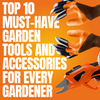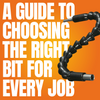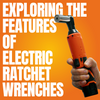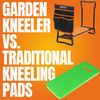
Do you have a small tree that needs some pruning but doesn't want to spend money on professional services? Well, we've got you covered! Pruning is essential for maintaining the health and growth of trees, but it can be daunting for beginners. This DIY guide will cover everything you need to know about tree pruning. We'll start with the basics of pruning and its importance with tips on identifying when to prune. Safety measures are also crucial while pruning- we'll discuss the essential protective gear and precautions. We'll introduce you to different types of pruners and help you select the right one for your job. Our step-by-step guide will walk you through preparing your workspace, making the right cuts, and post-pruning care.
Additionally, we will address common small pruning jobs such as fruit trees, shaping hedges & bushes, and maintaining small ornamental trees. Troubleshooting common issues such as diseased branches, overgrowth & dead branches will also be covered. Lastly, we'll discuss how pruning contributes to tree health by promoting growth and fruit production and preventing disease & pest infestations. So get ready to learn how to safely tackle small pruning jobs at home!
The Basics of Tree Pruning
Proper tree pruning is essential for promoting healthy growth and removing dead or diseased branches. It also enhances the aesthetics of your trees and improves sunlight penetration.

Understanding different pruning techniques is key to achieving the desired results. By pruning at the right time of year, you can minimize stress on the tree. Regular pruning helps maintain the size and shape of your trees, ensuring they fit well within your landscaping.
Understanding the Importance of Pruning
Pruning plays a crucial role in maintaining tree health and safety. Removing dead or weak branches significantly reduces the risk of falling during storms. Additionally, pruning stimulates new growth and increases fruit production in fruit trees.

It also improves air circulation, reducing the risk of fungal infections. Lastly, pruning allows homeowners to shape trees and promote a more balanced canopy, enhancing the overall aesthetics of their landscaping. Remember, proper pruning is essential for the well-being of your trees.
Identifying When to Prune
Knowing when to prune your trees is crucial for their health and proper growth. Deciduous trees should be pruned during their dormant season, typically in late winter or early spring. For flowering trees, it's best to wait until after blooming to avoid removing potential blossoms. Evergreen trees and shrubs can be pruned in late winter or early spring before new growth starts. Regular maintenance pruning can be done at any time throughout the year as needed, but it's important to avoid pruning during extreme heat or cold periods.
Tools for Pruning Trees at Home
When pruning trees at home, having the right tools is essential. Pruning shears are perfect for cutting small branches and twigs, while an extendable tree pruner allows you to reach high branches without needing a ladder.

For thicker and higher branches, a gas pole saw, or electric pole saw is a great choice to reach branches. Don't forget about hedge trimmers for shaping shrubs and hedges. And if you have larger pruning jobs, consider renting or purchasing a saw pruner. With these tools in your arsenal, you can tackle any pruning job effectively.
Selecting the Right Tree Pruner
When selecting a tree pruner for your DIY pruning tasks, there are several factors to consider. First, consider the size and type of trees you will be pruning. For comfort during extended use, look for pruners with ergonomic handles.

Durability is important, so choose cordless tree pruners from strong materials like fiberglass, high-quality steel, or battery-powered. Additionally, consider the weight and length of the pruner for ease of use and reach. Reading reviews and seeking recommendations from professionals or experienced gardeners can also help you find the best tree pruner.
Step-by-Step Guide to DIY Tree Pruning
Start by identifying the branches in need of pruning. Utilize proper cutting techniques, ensuring clean cuts just outside the branch collar. Begin with removing dead or diseased branches, followed by crossing or rubbing branches. Continuously step back to assess the overall shape and balance of the tree. Dispose of pruned branches appropriately, either through composting or by local regulations. Always prioritize safety when undertaking tree trimming and landscaping tasks at home.
Preparing Your Workspace
Before you begin pruning, it's important to prepare your workspace properly. Start by gathering all the necessary tools and power tools for the job, including scissors, pruning shears, pulleys, loppers, and even an electric tree pruner. Wear appropriate safety gear such as gloves, eye protection, and sturdy footwear. Identify the branches you want to prune and ensure they are within reach. Consider the weather conditions and avoid pruning during high winds or rain. Lastly, ensure the area around the tree is clear of any obstacles or people. By taking these steps, you'll create a safe and efficient workspace for tree pruning.
Making the Right Cuts
When it comes to tree pruning, it is important to understand its purpose and the best time of year to prune different types of trees.

By using the proper pruning tools, such as a top-notch tree limb cutter or gas-powered pole chainsaw, you can make clean cuts and avoid damaging the tree and reaching branches of the trees above ground level. Safety should always be a priority, so wear protective gear and maintain stability while working at heights. Strategic cuts can promote healthy growth and remove damaged or diseased branches. However, it's best to call in a professional arborist for larger or more complex pruning jobs.
Post-Pruning Care
Once you've finished pruning your tree, taking care of it properly is important. Begin by cleaning and sterilizing your pruning tools to prevent the spread of disease. Additionally, consider applying a tree wound dressing to promote healing. Keep a close eye on the tree for signs of stress or damage, such as wilting leaves or discoloration. Water the tree deeply and regularly to help it recover from pruning stress. It may be wise to hire a professional arborist for larger or more complex pruning jobs.
Common Small Pruning Jobs You Can Handle
Pruning Fruit Trees
When it comes to pruning fruit trees, it's important to understand the specific needs of your tree species. Proper pruning tools such as shears, string trimmer, loppers, battery-powered pole saws, or a chain saw pruner with a durable cutting head will help you achieve the desired results. Learning about different pruning cuts of tree branch, including thinning, heading, and reduction cuts, is crucial for tree shaping. Don't forget to follow safety precautions like wearing gloves and eye protection, and prune during the dormant season for optimal growth and fruit production.
Shaping Hedges and Bushes
When it comes to shaping hedges and bushes, timing is crucial. Consider the growth patterns of your plants before making any cuts. Use the right tools to tackle the job, like sharp pruning shears or loppers.

Start with smaller cuts and gradually work your way up to larger branches. Remember to prioritize safety by wearing personal protective equipment. Once you're done, dispose of the cuttings and debris properly.
Maintaining Small Ornamental Trees
When it comes to maintaining small ornamental trees, it's important first to identify the type of tree and determine the best time for pruning. Proper tools, such as pruning shears or loppers, are essential, so be sure to sanitize them before use. Focus on removing dead, damaged, or diseased branches, as well as any crossing or rubbing branches. It's important to avoid over-pruning and damaging the tree's structure or health. For larger or more complex pruning jobs, consider consulting with an arborist.
Troubleshooting Common Pruning Issues
Avoiding damage to the tree while pruning is crucial. Be sure to use proper pruning techniques, such as making clean cuts at a slight angle and not removing more than 25% of the foliage at once. Identify and remove any dead or diseased branches to prevent further health issues. Pruning correctly will promote healthy growth, but be mindful of common mistakes like pruning too much at once. Lastly, sanitize your pruning tools to prevent the spread of disease.
Dealing with Diseased Branches
When it comes to tree health, it's important to identify and remove any diseased branches. By pruning affected areas, you can prevent the spread of diseases to other parts of the tree. Make sure to dispose of these branches properly to avoid further contamination. If you're unsure about specific tree diseases, consulting with experts who can diagnose and provide appropriate treatment is always a good idea. Regularly inspecting your trees for signs of disease can help catch any issues early on.
Addressing Overgrowth
When addressing overgrowth in your trees, remember a few key points. First, trimming back overgrown branches helps maintain the aesthetics of your trees and promotes their overall health. Additionally, pruning these branches is important to prevent them from becoming hazardous, especially near structures or power lines. Appropriate cutting techniques, such as making clean cuts at a slight angle just above a bud or lateral branch, can encourage proper growth. Consulting with arborists can provide valuable guidance on managing overgrowth and ensuring the best approach for your specific trees. Lastly, assessing and addressing overgrowth is essential to prevent future issues regularly.
What to Do with Dead Branches?
Properly disposing of dead branches is essential to maintain tree health and prevent hazards. Pruning dead branches improves the appearance of trees and prevents the spread of diseases and pests. Consider using cut branches for firewood or mulch to minimize waste.
Best Electric Tree Pruner Fit for Small Pruning Jobs at Home
The best electric tree pruner is a lightweight and convenient option when tackling small pruning jobs at home. A cordless tree pruner like SuperPruners from SuperBrand Tools provides the perfect solution. With its compact design and powerful cutting capacity, the SuperPruners allows you to easily trim branches without the hassle of cords or heavy equipment.

The SuperPruners is equipped with a 3.6V Li-on battery that features high-quality SK5 stainless steel blades that are exceptionally sharp, making it ideal for trimming and pruning various foliage such as trees, shrubs, and bushes. Along with the electric pruner, the package includes a charger, rechargeable battery, and all the necessary accessories. This versatile tool can cut thick branches from softwoods like pine and cedar and hardwoods like oak, sycamore, and ash. It is crucial to remember that its capacity to handle branch size is limited to 17mm in diameter. As a result, it is not advisable to use it for cutting larger branches on tall trees.
Conclusion
In conclusion, DIY tree pruning can be a rewarding and cost-effective way to maintain the health and beauty of your trees. You can safely tackle small pruning jobs at home by understanding the basics of tree pruning and following the proper safety measures. Remember to use the right tools for the job and follow a step-by-step guide to ensure you make the right cuts and provide post-pruning care. Additionally, knowing when to prune, using an electric tree pruner, and troubleshooting common issues will contribute to the overall health of your trees.
























